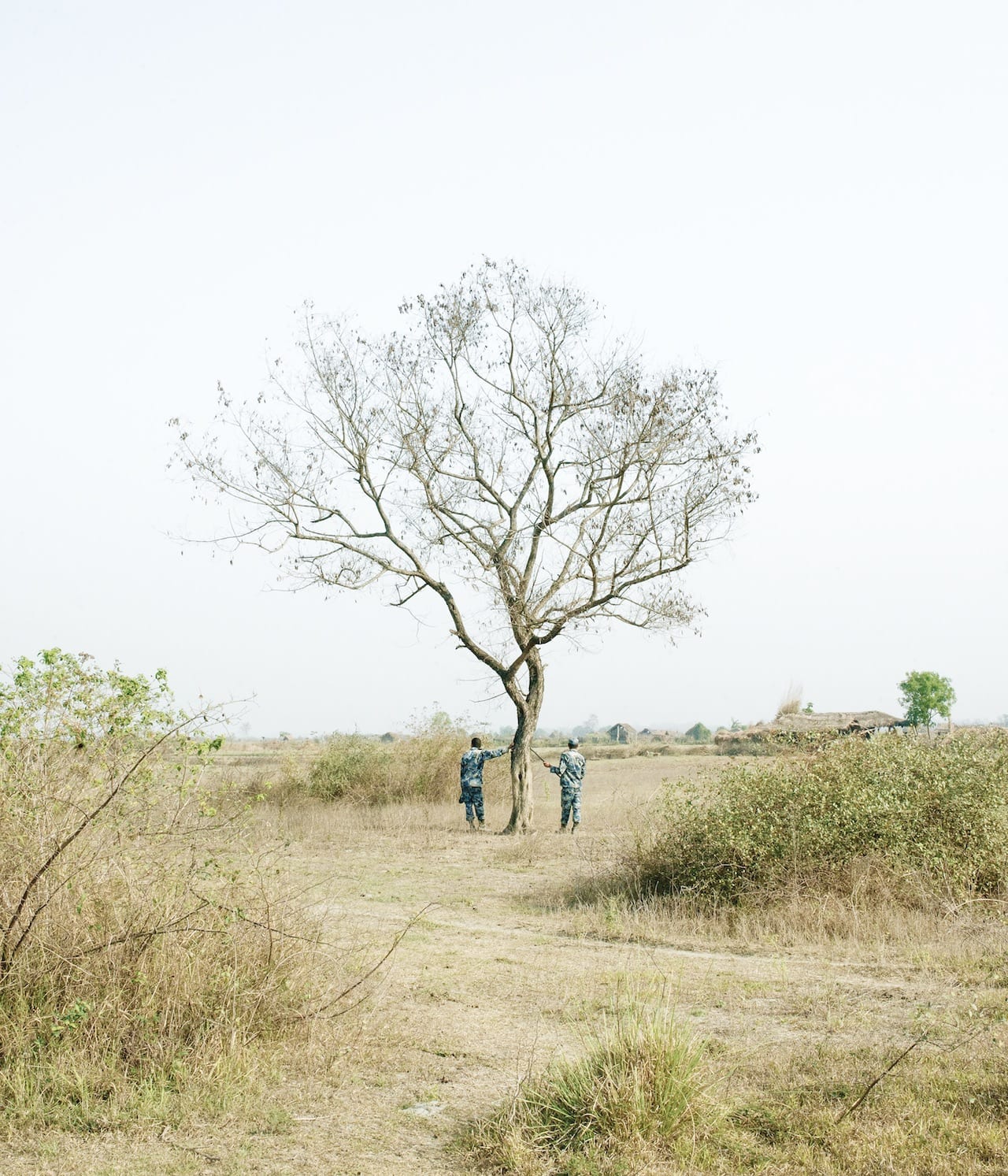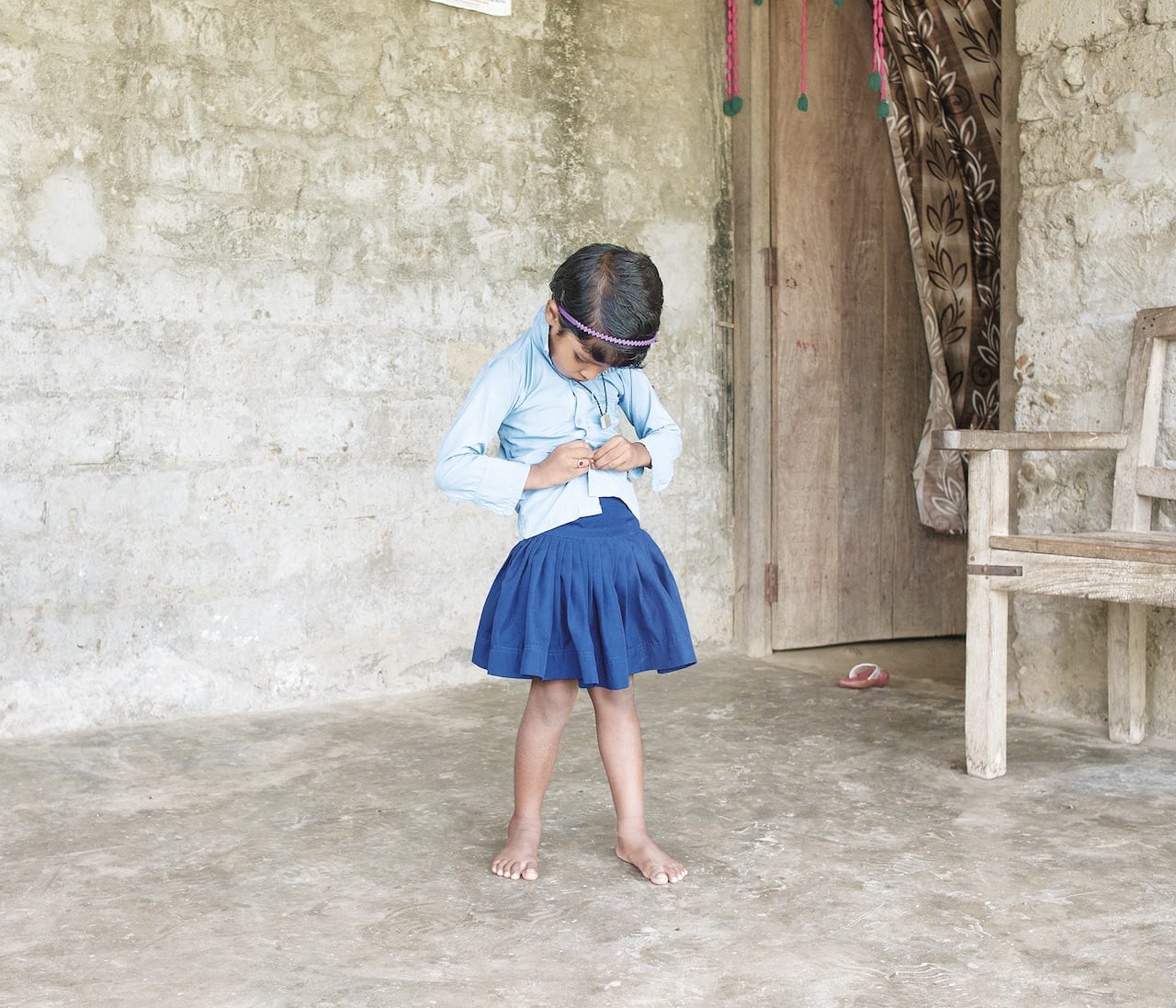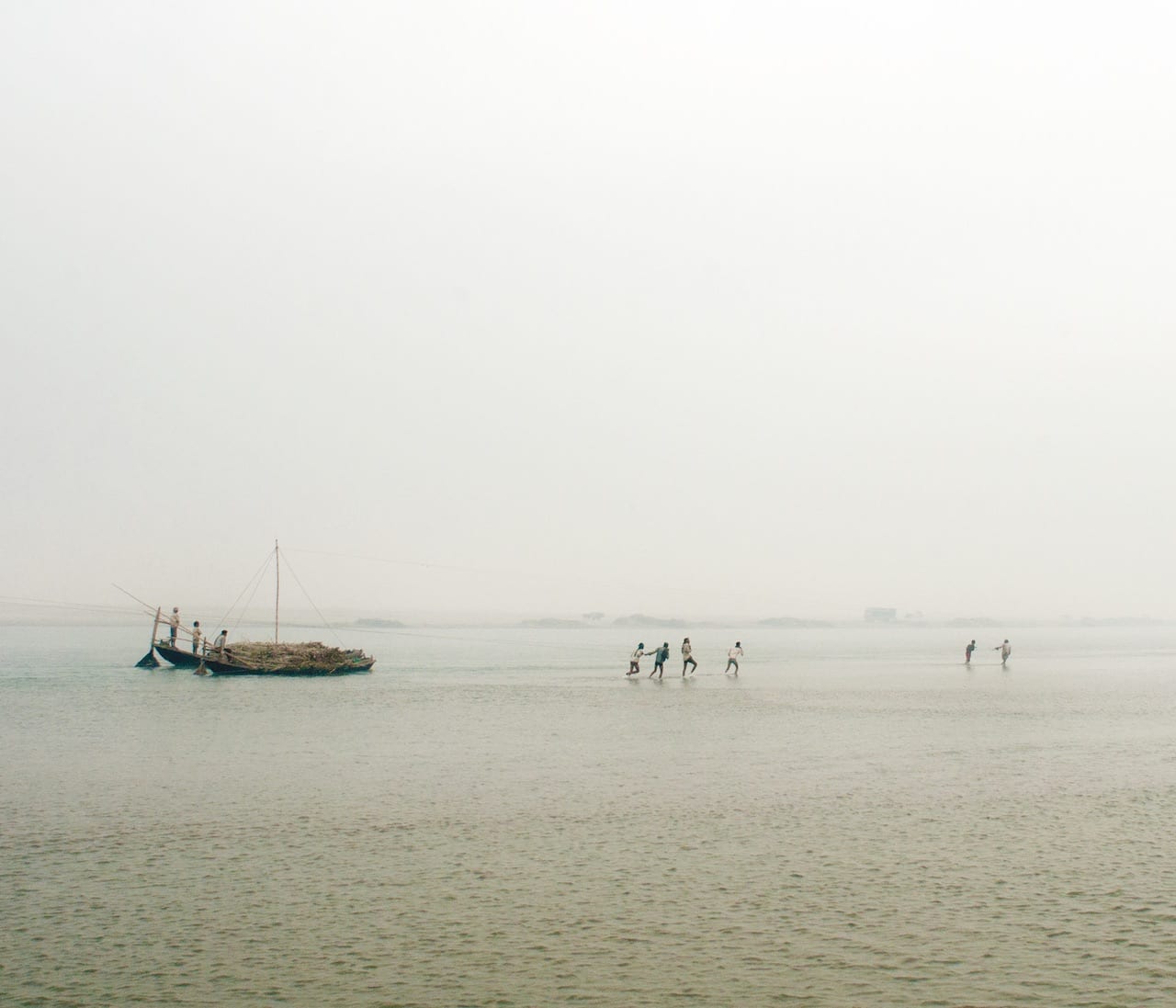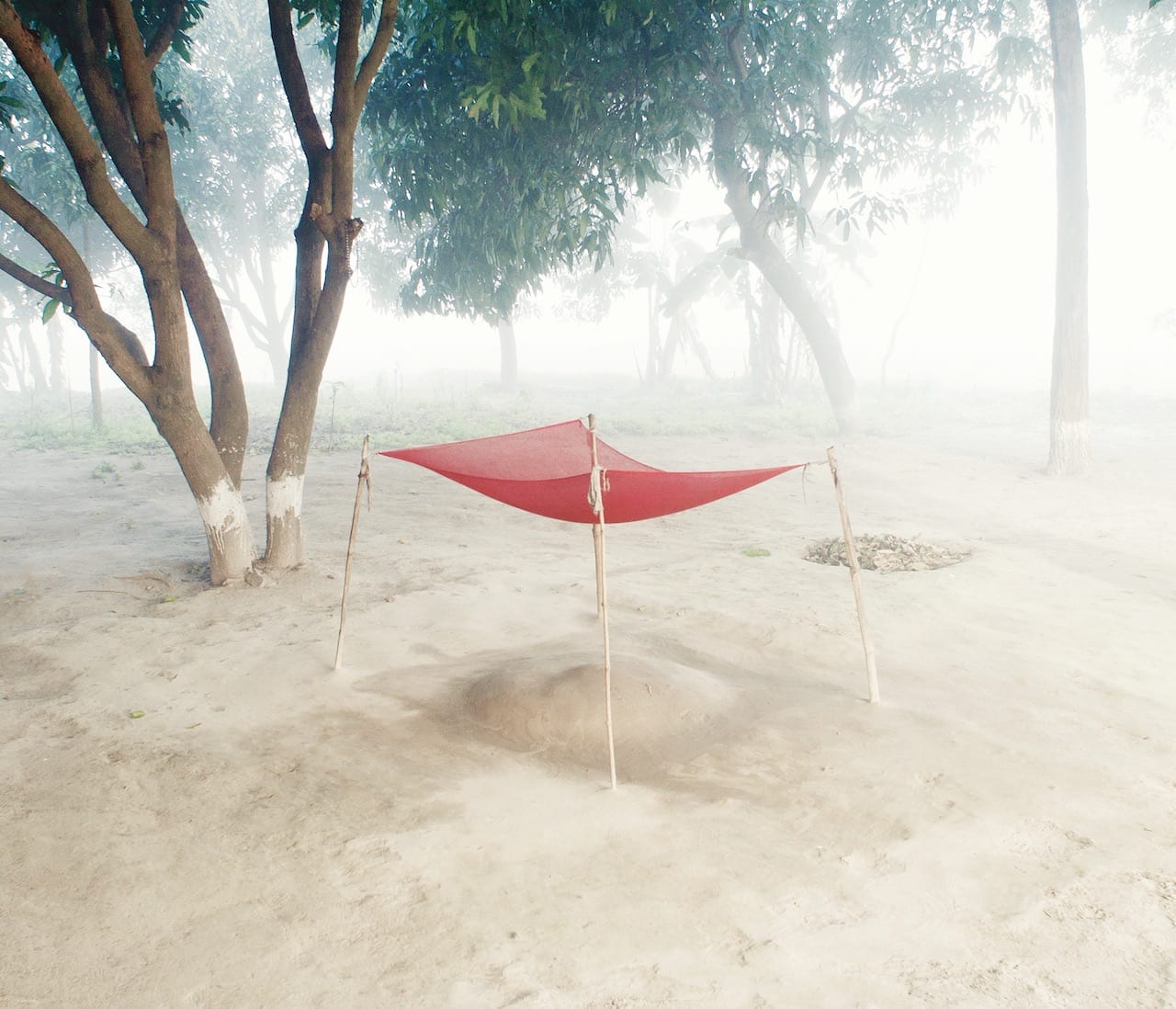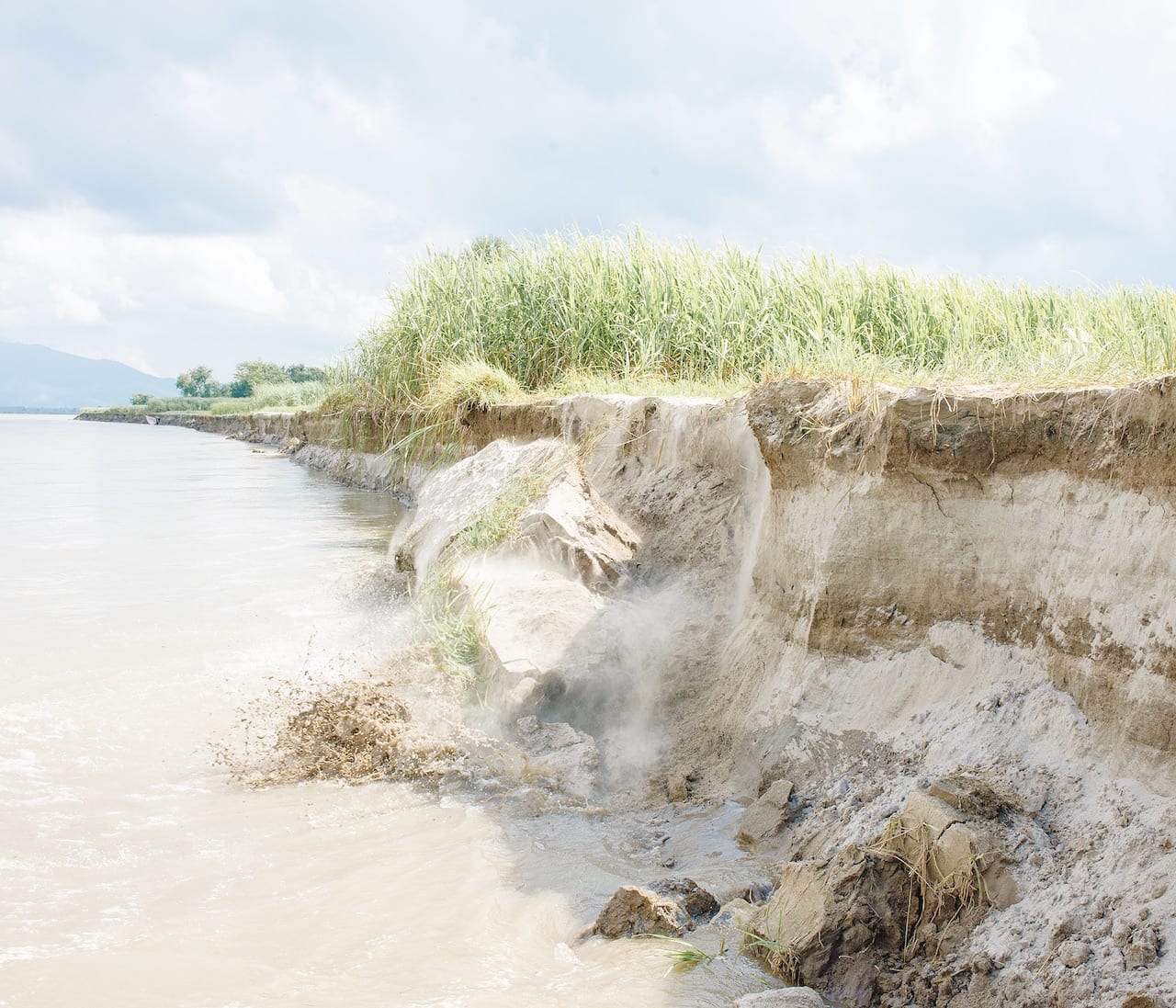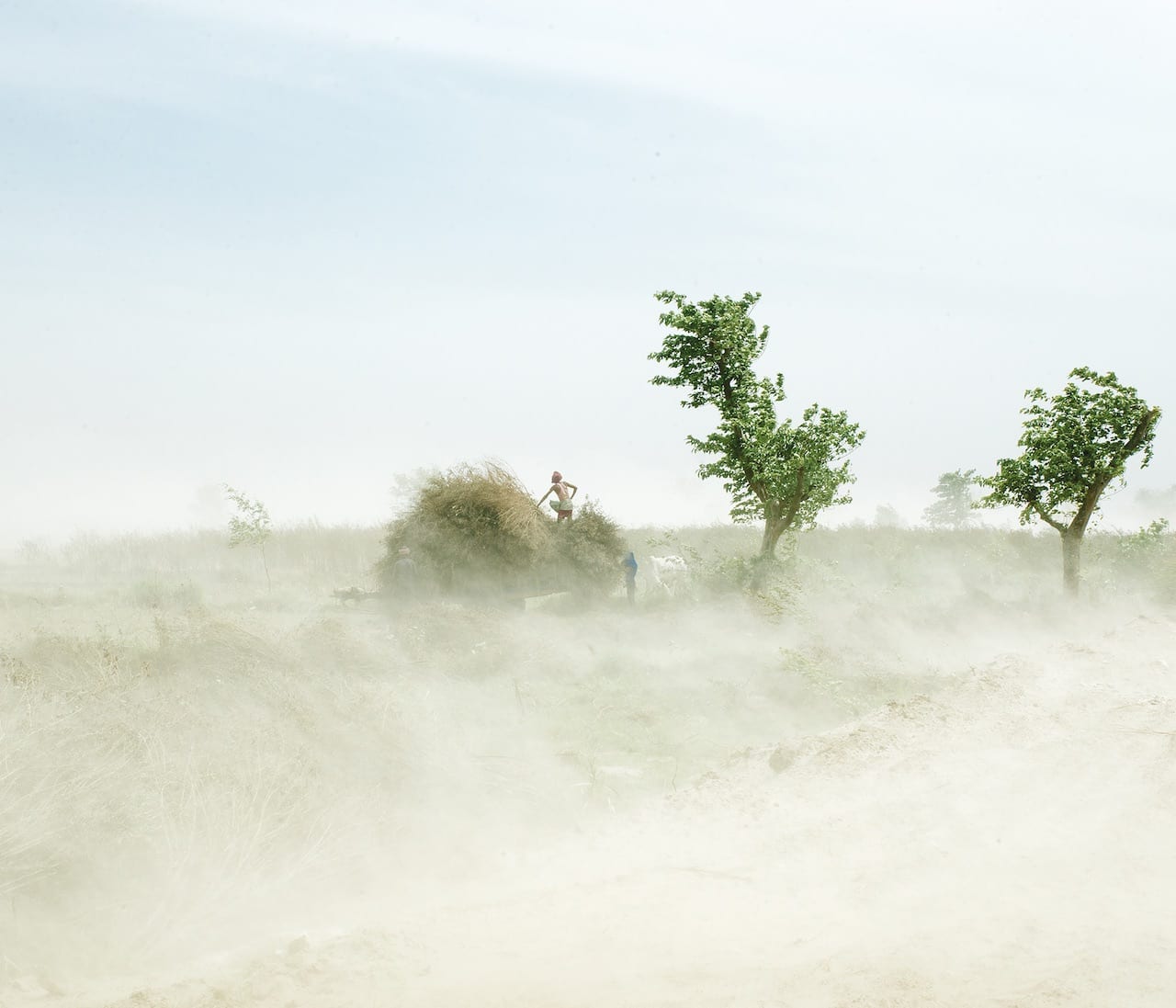For Sthapit, the experience has become much deeper and more personal than he ever could have expected. “Although it’s surrounded by land on three sides and water on one, there is the sense that Susta is an island. After visiting a couple of times, I was accepted wholeheartedly by the community of this island. Walking down the street with my camera I would be beckoned into a family home, to find the entire family dressed up ready for a formal group portrait!”
The issues that face Susta don’t look likely to change – a bridge was planned to reconnect Susta back to Nepal, but work on it has never commenced, and electricity and access to formal education are just two of a number of issues facing Susta’s inhabitants.
On Sthapit’s last day in the village, a policeman who was stationed there gave him a poem, the opening lines read: “We once were Susta and Susta we stayed/But lately we feel more like an outsider/Narayani blows a whistle and grants us neither/Shawl nor shame, all the same, we feel betrayed.”

